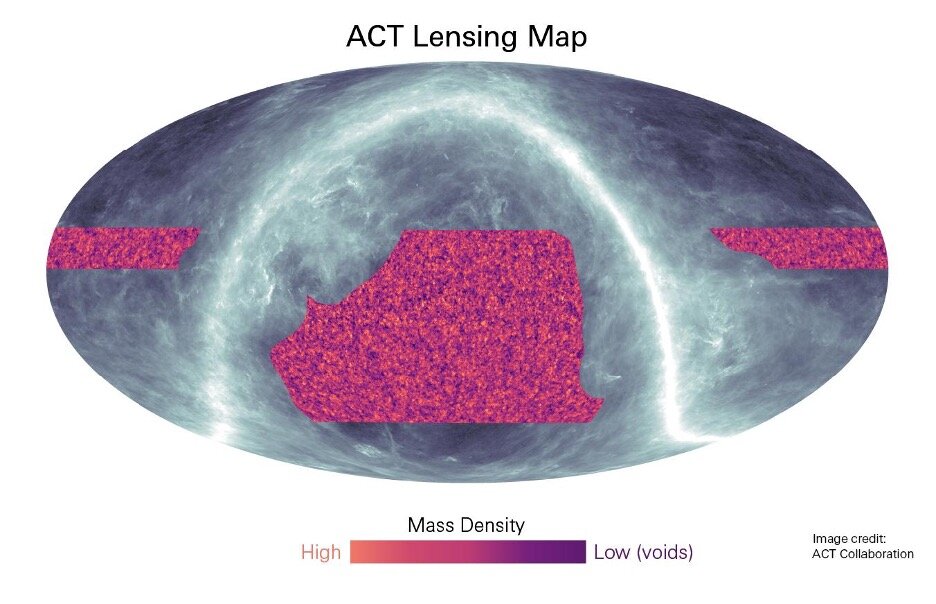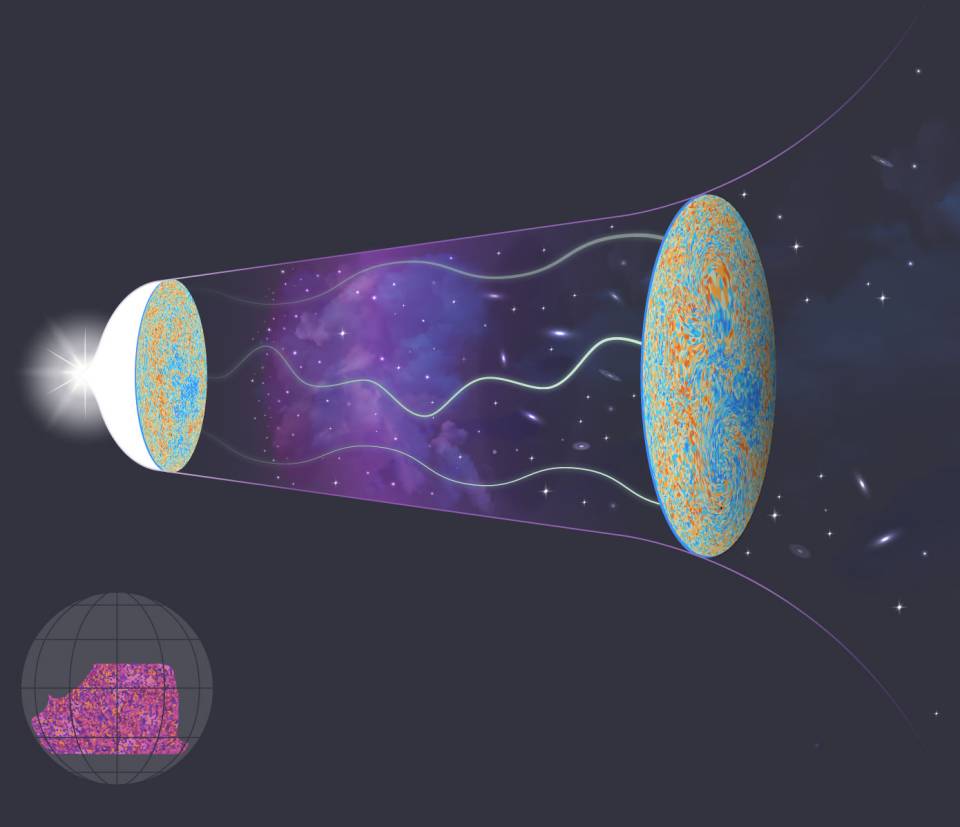The most detailed map of the distribution of dark matter in the Universe confirms the correctness of Albert Einstein’s theory of gravity. This is stated in a press release published on the website of Princeton University.
What is dark matter
We perceive the Universe as a cluster of stars, planets, clouds of interstellar gas, nebulae, galaxies, etc. Or, in other words, objects that participate in electromagnetic interaction and that can be observed.

However, in reality, visible matter accounts for only a few percent of the total mass of the Universe. A much larger part of its substance is the so-called dark matter. We can’t see it. It does not emit, absorb or reflect light. Its presence reveals only the gravitational effect on ordinary matter. In particular, it is precisely because of dark matter that the outer parts of spiral galaxies close to us rotate faster than they should, based on the mass of the matter that astronomers can see.
Record map of the Universe
An international team of astronomers has set out to make the most detailed map of dark matter in order to better understand its properties. In order to detect its clusters, the researchers relied on relic radiation.

The relic radiation was formed 379 thousand years ago, when our Universe cooled so much that the first hydrogen atoms appeared in it. It evenly fills the sky, acting as a kind of background illumination.
Using the Atacama Cosmological Telescope (ACT), astronomers conducted a series of measurements of the relic radiation, looking for curvatures caused by the presence of large clusters of matter. As a result, they managed to create a map covering about a quarter of our Universe. Its analysis shows that both the “lumpiness” of the Universe (the concentration of matter) and the rate at which it expands after 14 billion years of evolution fully correspond to the predictions of the standard cosmological model (ΛCDM) based on Albert Einstein’s theory of gravity.
According to the scientists, their work is important because while other teams are looking for “cracks” in the foundation of the standard model, they have managed to obtain new confirmation of its fundamental correctness.
According to https://phys.org
Follow us on Twitter to get the most interesting space news in time
https://twitter.com/ust_magazine
